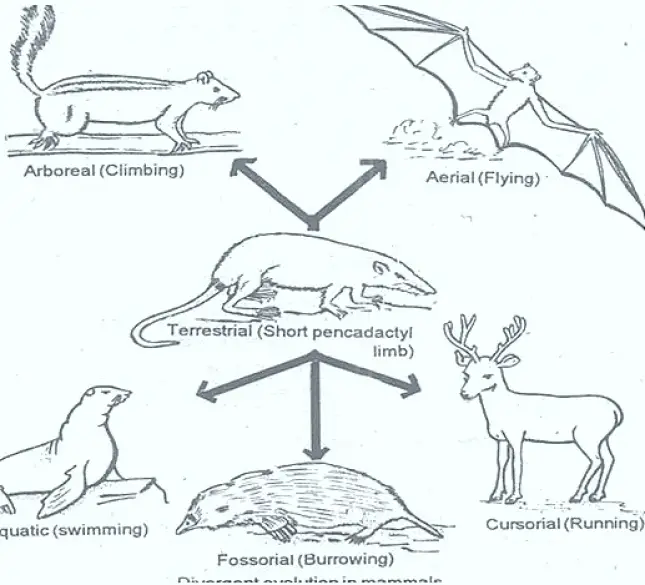Medically reviewed and approved by a board-certified member

Adaptive Divergence
Evolution has been described as the process of gradual modification in the plants or animals (living organisms) basically two patterns are distinguished in the process of evolution. The minor changes in the gene pool of a population from one generation to the next may not produce new populations. The newly formed population is not genetically identical with its predecessor. This is called ‘Sequential evolution’. The changes occur in the newly evolved populations, species, families and classes is known as divergent evolution.
The animals of the same group are closely related groups exhibit great divergence in their morphology when they are found in different habitats. Prof. Osborn states that “each isolated region, if large and sufficiently varied in its topography, soil, climate and vegetation will give rise to a diverse fauna. The larger the region and more diverse the conditions, the greater will be varieties of animals found.” Therefore, the divergent evolution in specialized directions, starting from a common and generalised type or the entry of organisms of the original stock to new adaptive zones.
Example (1): The limb structure of placental mammals provides a classical example of divergent evolution. The ancestors of all the present day types of mammals can be traced back to a primitive insect eating five toed, short -legged creature walked with the soles of their flat feet. The pent dactyl limbs were not modified for any particular type of locomotion. These lived on land and formed as ancestors to the modern mammals. Now the modern mammals have occupied five different habitats. Therefore, divergence occurred in five lines for five different habitats with modification In their limb structure.
- The first line lead to “arboreal (climbing) modification “seen tree-dwelling forms like squirrels and primates.
- The second line acquired “aerial (flying) modification”, found in animals adapted for flight (Bat)
- The third line represents “cursorial (running) modification”. This type of mammals are adapted to fast running - Horse, Deer’s, Dogs etc.
- The fourth line acquired ‘fossorlal (burrowing) modification’, seen in moles.
- The last line lead to “aquatic (swimming) modification “found in seals, whales etc.
In all these lines, mammals exhibit the modified limb structure for some particular mode of locomotion, So these limb types are derived from one common type represented by short pentadactyl limbs of terrestrial mammals. This shows a relatively generalized ancestral group gives rise to many relatively more specialized descendents.
Example (2): Mammals possess’ heterodont dentition.
The incisors for biting, canines for tearing and grasping and the premolars and molars suited for grinding. The premolars and molars exhibit greatest structural modifications for different types of food.
- Insectivorous type Insect feeders - modified for crushing feeble prey.
- Carnivorous types: Meat eaters - modified by having high crowned with complicated cusps-carnasial.
- Herbivorous type modified for succulent vegetation & harsh grasses. Incisors are suited for cuffing the vegetation.
The toothed whales have become secondarily homodont with grasping teeth. In sperm - whales, the teeth are absent. This type evolution of group Is known as macro evolution.
End of the article